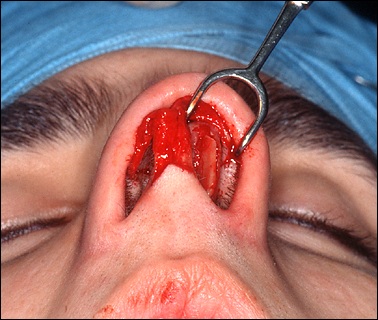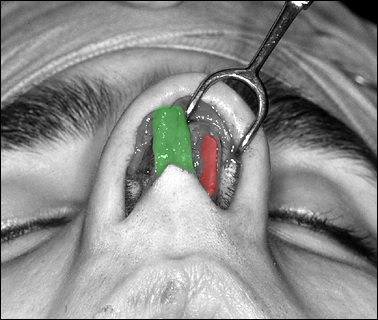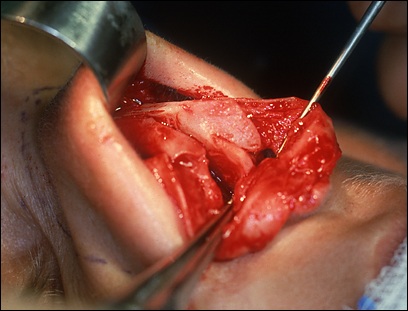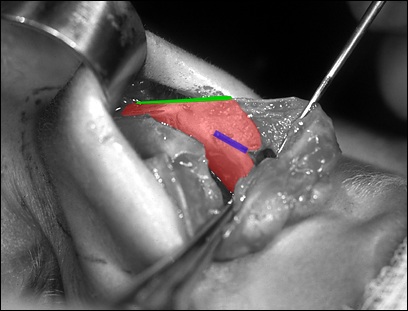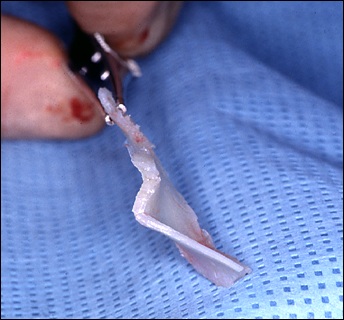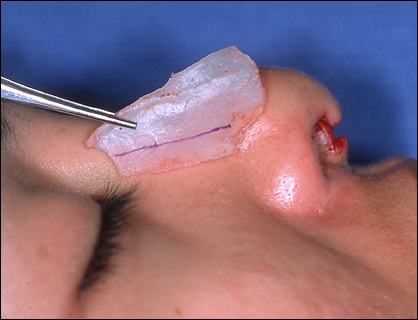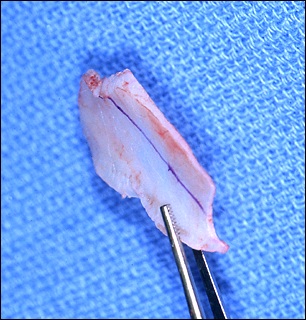 Sometimes we
remove part of the septum even if it's straight. If the nose's appearance
is unsatisfactory, the septal cartilage can be harvested, trimmed and shaped,
and used elsewhere in the nose to give the nose a better appearance.
Septal cartilage is strong and easy to work with, and it's a very good material
to use in reconstructing a nose.
Sometimes we
remove part of the septum even if it's straight. If the nose's appearance
is unsatisfactory, the septal cartilage can be harvested, trimmed and shaped,
and used elsewhere in the nose to give the nose a better appearance.
Septal cartilage is strong and easy to work with, and it's a very good material
to use in reconstructing a nose.
The two views above
show a straight piece of cartilaginous septum that I removed from a nose, not
because the cartilage was crooked and blocking the airway, but because the tip
of the nose needed work, and I used the septal cartilage to rebuild the
tip. You will see this piece of cartilage again in the chapter on tip
support.
See how this piece
of cartilage is flatter than the previous one we saw on this page. In
blue, I've marked where I will carve off a strip of the cartilage to use in the
nose. This cartilage is also quite large compared to the size of the
entire nose. Won't removing this much cartilage harm the appearance of her
nose? In a future chapter, we'll discuss how to know what portions of the
septal cartilage it is safe to remove for use in another part of the nose.
|













